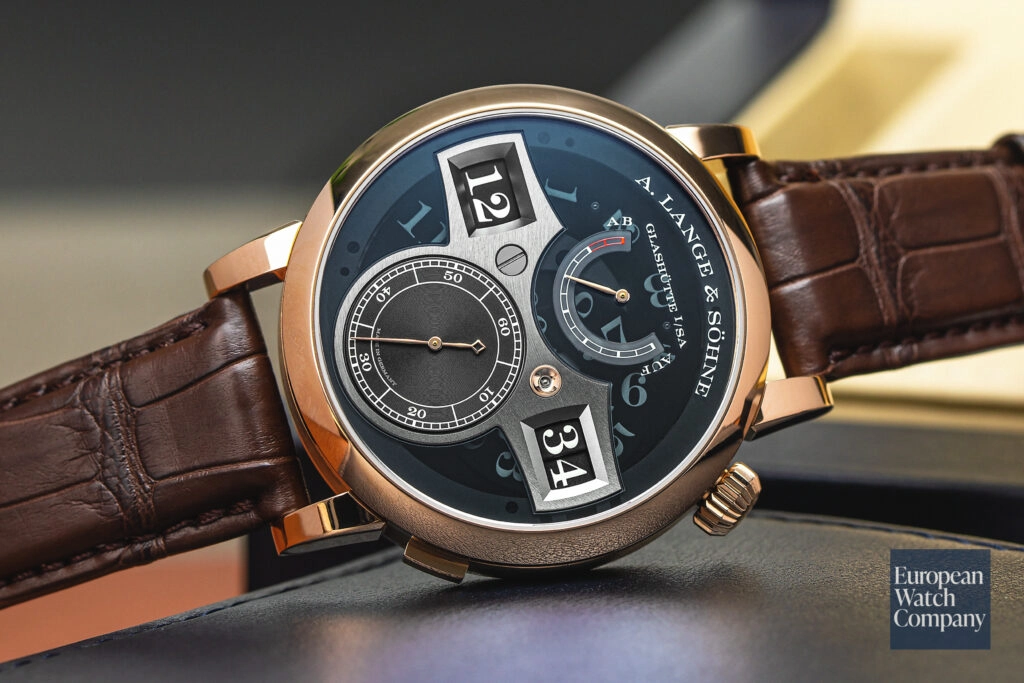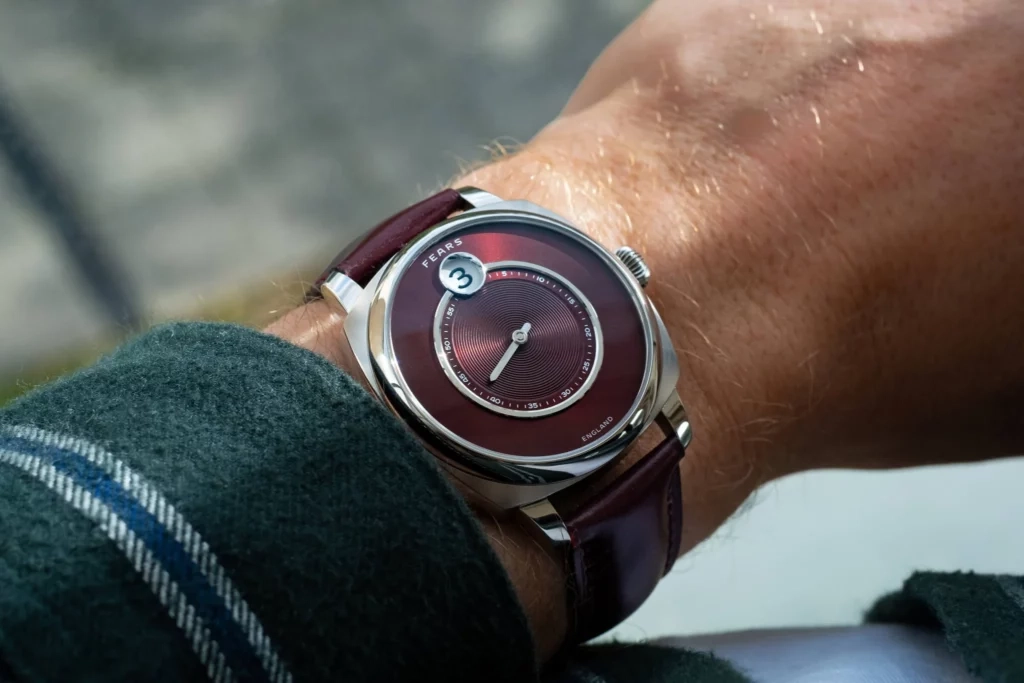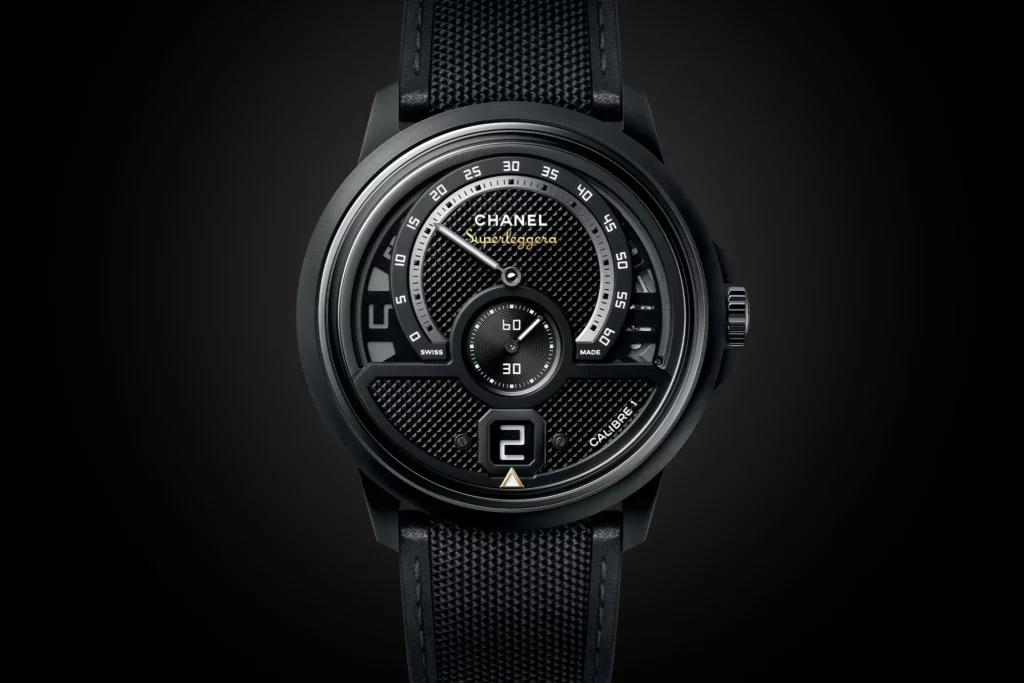The Jump Hour Complication Is Trending: Here Are 5 of Our Favorites
Buyers Guides
In a world where so many watches lean on vintage cues and familiar silhouettes, the jump hour stands out. It tells time using rotating numerals rather than sweeping hour hands, giving it a digital look with entirely mechanical guts. The result is a visual paradox: simple to read, complex to build.
The jump hour complication has been enjoying a bit of a comeback. Once considered the oddball cousin of more traditional time displays, it has been appearing on collector wrists, in independent watchmaking projects, and even the mood boards of major design houses.

With more brands experimenting and collectors paying attention, it felt like the right time to spotlight five of our favorite jump hour watches. But first, a look at why this quirky complication is resonating more than ever.
The Collector Shift
Why has the jump hour complication been gaining momentum? Part of it is visual. In a sea of scrolling feeds and increasingly similar designs, a jump hour display naturally grabs attention. But more than that, collectors are searching for character and individuality.
“There’s definitely growing interest in jump hour watches among collectors today,” said Logan Baker, Senior Editorial Manager at Phillips. While vintage Cartier has always had a loyal fan base, interest has grown in neo-vintage pieces like the Vacheron Constantin Saltarello and watches from Gerald Genta. “New releases from Cartier, Chopard, and Otsuka Lotec have only increased awareness. People want something that sets them apart,” said Baker.

For collectors used to endless variations of the same design language, the jump hour feels refreshing. “So many watches follow the same template: a circular case with central hands. A jump hour feels different,” Baker added. “It’s unconventional, but still deeply tied to traditional watchmaking.” What was once niche is now becoming a favored format among more informed, design-conscious collectors.
That same hunger for something distinct helped shape the Fears Christopher Ward Alliance 01. Nicholas Bowman-Scargill, CEO of Fears, explained that the decision to use a jump hour was both technical and emotional. “When Mike France and I discussed which of the JJ modules to use, I was adamant it should be the jump hour,” he said. “I’ve always loved the hybrid nature of the JJ01 movement. It’s half digital, half analog. The way it clicks over with a swoosh, almost like a camera shutter, gives it a very tactile charm.”
When the Alliance 01 launched in early 2023, there were very few mechanical jump hours under £10,000. “That made it feel genuinely special,” he said. “The design hinted at old pocket watches but still felt contemporary. And the burgundy dial gave it a distinctive identity.” The launch drove record-breaking web traffic for the brand. But more importantly, it appealed to a wide range of collectors. “It wasn’t just Fears or CW collectors, it appealed to high-end collectors too. It reached across the spectrum.”
A little quirky, a little nostalgic, and deeply rooted in traditional watchmaking, the jump hour has become the right kind of different in a crowded market.
With that in mind, here are five of our favorite jump hour watches currently available at European Watch Company. Each one showcases a different facet of this unique and often overlooked complication.
Cartier Tank à Guichets

If the jump hour has an Art Deco godfather, it would be the Cartier Tank à Guichets. First released in 1928, it broke all the rules. There were no hands, no open dial, just two clean windows showing the hours and minutes, housed in a streamlined platinum case. Cartier revived the design at Watches & Wonders this year as part of its Privé collection, and it remains one of the most elegant and minimalist expressions of the jump hour complication.
Otsuka Lotec Model 7.5

At the other end of the aesthetic spectrum is the Otsuka Lotec Model 7.5, a Japanese indie piece that feels more like a kinetic sculpture than a wristwatch. The hour display is discreet, tucked into a cutout at 3 o’clock. The rest of the dial is a masterclass in restraint, with softly machined textures and barely any branding. It is the kind of watch that rewards slow discovery. First you notice the jump, then you admire the finishing, and finally you find yourself wondering who made it and why more people aren’t talking about it.
A. Lange & Söhne Zeitwerk

Where Cartier is elegant and Otsuka Lotec is minimalist, the A. Lange & Söhne Zeitwerk brings sheer presence and engineering muscle. Released in 2009, it reimagined both the jump hour and jump minutes as the visual centerpiece of the dial. A constant-force escapement powers its mechanical numerals, making it as technically advanced as it is bold. Though not produced in large numbers, it has become a cult favorite among collectors and a clear example that jump hours belong in haute horology.
Fears Christopher Ward: Alliance 01

The Alliance 01 represents a rare collaboration between two British brands. Fears brought its history and refined aesthetic, while Christopher Ward contributed modern technical expertise. The result was a limited-run jump hour watch that felt modern, crisp, and entirely wearable. The layout is clean, with a jump hour window at 12 o’clock and a peripheral minute track. The finishing is subtle but considered, and the proportions make it comfortable on the wrist. Crucially, it is one of the few mechanical jump hours that is actually accessible, making it a compelling option for collectors who want to wear their watches often.
Chanel Monsieur Superleggera

Chanel may not be the first name that comes to mind in mechanical complications, but the Monsieur Superleggera deserves serious attention. This version is the sportier follow-up to the original Chanel Monsieur, now housed in a matte black ceramic case. Inside is the Calibre 1, developed entirely in-house. The jump hour is located at 6 o’clock and paired with a retrograde minute display. The result is a piece that balances style and technical sophistication, all without sacrificing daily wearability. Among this list, it might be the most versatile and surprising.
Final Thoughts
The jump hour is not new, but its return feels especially timely. It is a complication that doesn’t demand attention but earns it gradually. It is visually striking, mechanically clever, and just different enough to feel special in today’s sea of lookalike designs.
In a landscape filled with vintage reissues, integrated bracelet clones, and predictable dial layouts, the jump hour offers something far more interesting. That’s exactly why it is worth paying attention to, and why the five exa